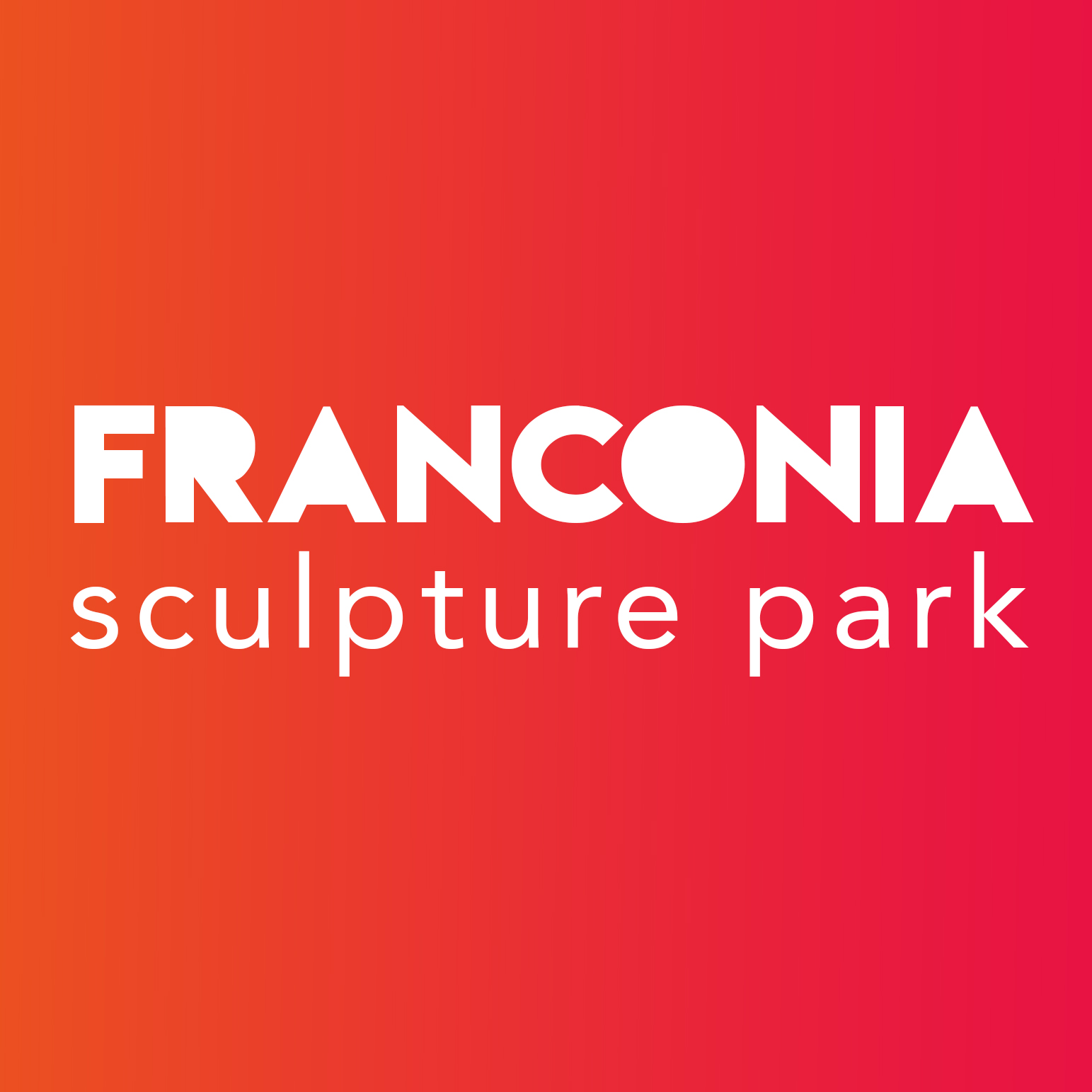Spring has sprung at Franconia Sculpture Park (FSP), and we would like to kick off another wonderful season by giving a shout out to five wonderful artists who identify as women in honor of the conclusion of Women’s History Month.
Featured Artists
These five artists have participated in one of our five different artist opportunities over five during years. All were kind enough to answer questions regarding their artistic practice, what they accomplished during their time here, what drives them as artists, and what other women-identifying artists inspire them. At the end, each will offer their advice for aspiring women artists.
Each of these artists answered the same six questions. For their full responses, please visit their artist pages on the Franconia Sculpture Park website. You can view their pages by clicking their names under “Featured Artists” above.
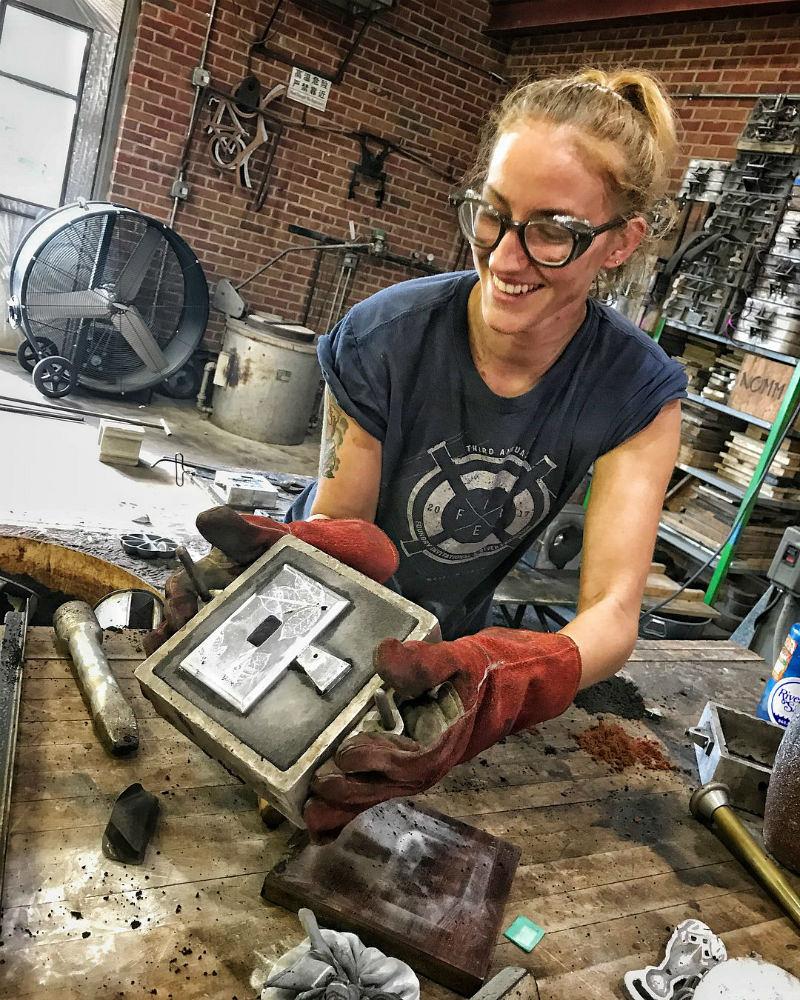
Q: Can you tell us a bit about your current artistic practice? Any new projects that you are working on?
Dorau: “Currently my artistic practice is confined to nights and weekends or the occasional Iron Conference. I work full time as a lead fabricator for a custom furniture designer and it takes up a majority of my week. Making my own work comes in spurts these days. Currently I’m working on a series of cast iron mini sculptures with the original patterns made out of Plasticine and wood. The concept behind them is not to think too much about the end result but rather to enjoy the making process and the handling of materials. There are 31 total mini sculptures and I plan to cast the last 6 next week at Sloss Iron Furnaces in Birmingham, Alabama during their biennial iron conference.”
Q: What project did you make during your residency here at the park?
Dorau: “While I was at Franconia, I was encouraged by John Hock (Founder and previous Director at FSP) to go big, so that is precisely what I did. I created a 13-foot-long cast iron vagina poured directly into the ground. I wanted to use the earth as a mother mold, and iron as a material due to the maternal/feminine aspects of both. I enjoyed the idea of taking this material that comes from the earth (iron) and using my body during an iron pour to then give it and myself back to the earth. I would love it if one day the earth just swallowed the sculpture whole.”
Moving forward two years, Hannah Brookman was an Intern Artist Fellow in 2016.
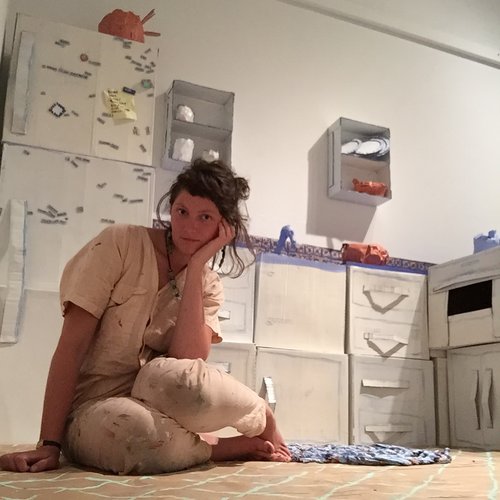
Q: Can you tell us a bit about your current artistic practice? Any new projects that you are working on?
Brookman: “My current work is very connected to the community that I have found in Western Massachusetts. I moved here after leaving Franconia in the winter of 2016 and was introduced to the music community that my boyfriend was a part of. Shy and unmusical, I worked on projects at home, such as rug hooking, painting, and sewing until I started to meet people who were interested in making art with me.
I met Beverly Ketch, a fantastic and inspiring poet, musician and ideas lady. We spoke of a magical children’s TV show that we wanted to produce about fairies that live in the town planters. Now we are nearly two years into the project, ‘The Lovelights’, and plan to release our pilot episode in August at our 2nd ‘Fairy House Day on Avenue A’ Street festival. This art project is farther reaching than any I have attempted in the past. Not only am I making all of the costumes and props for the show, I am filming it, editing it and acting in it.
I am hosting workshops for children at the non-profit art space that Beverly and I opened in Greenfield, MA, a year ago. I am writing grants, meeting with local arts administrators, and planning and promoting art camps for kids. When I’m not busy working on editing my show, I am editing others at my job at the Montague Community Television Station. I also spend a lot of time at our shop in Greenfield, called ‘Looky Here’, it is a gallery and we have a lot of openings and events as well as classes such as life drawing and music theory and we also function as a thrift shop for art supplies and music equipment. I still make paintings, and clothing and sculptures at my home studio in Putney, VT, and sometimes get commissions. I’m currently working on building an outdoor chandelier for a local bar, and I frequently illustrate comics for the children’s page of the Montague Reporter.”
Q: Why did you want to become an artist or what made you want to become an artist?
Brookman: “I’ve wanted to be an artist as long as I can remember. My parents encouraged me, and I have been going to museums and art classes all of my life.”
2017 was the year of Erica Mendoza, who was accepted into our Hot Metal Artist Program.
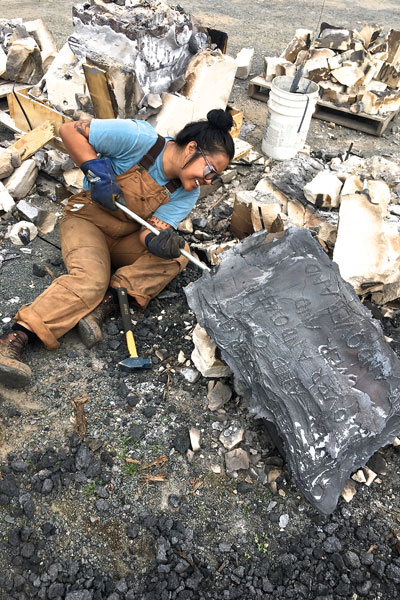
Q: Can you tell us a bit about your current artistic practice? Any new projects that you are working on?
Mendoza: “My artistic practice is something deeply personal and specific to myself, but probably speaks to the sort of universal experience of having your heart broken, or maybe falling in love, of waiting, of longing, of being torn apart, and of mending. I think a lot of communication technologies and their effects on the modern romantic relationship. I’m also interested in object association: attaching a person and memories to domestic items.
Right now I’m working towards a solo exhibition in Chattanooga at Versa Gallery called I hope it doesn’t rain tomorrow, which will feature a few site specific works involving some window blinds and some poems.”
Q: What keeps you motivated in the studio?
Mendoza: “I’ve always had a sort of innate drive to make things, to fix things. I love telling stories about anything—mundane or grand. Being motivated in the studio is hard. It is. I work M-F 9-5 at an ironwork shop as a fabricator and almost blacksmith, and I could never ask for a better or more fun way to make a living. On top of that, I’m also an adjunct instructor, so my goodness it’s hard to do anything after laboring all day.
What keeps me motivated is the thought, ‘How fortunate am I?’ How amazing is it that I (and other artists) get to make things that make me feel, then show it to others and hopefully make them feel something too.”
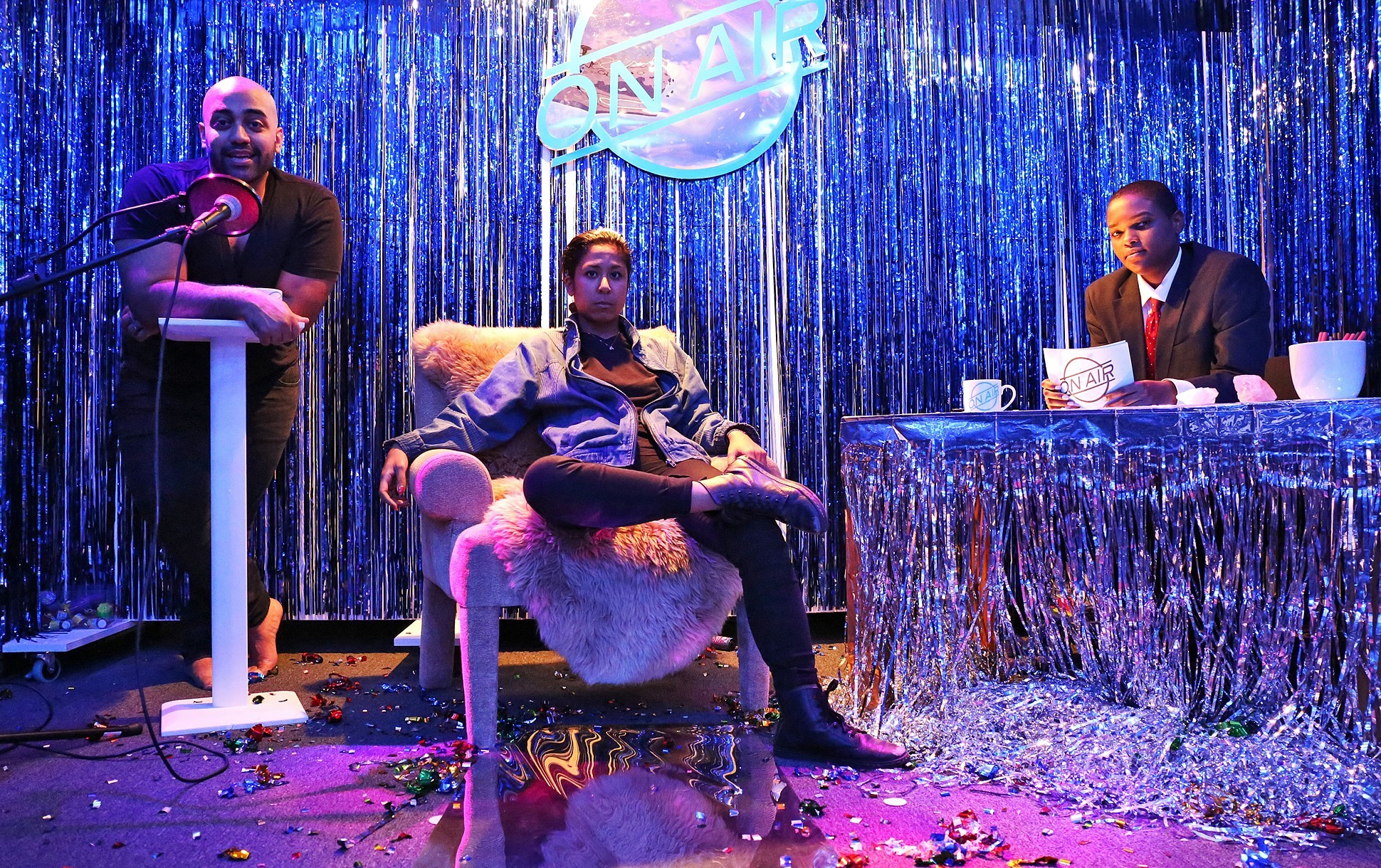
Q: Can you tell us a bit about your current artistic practice? Any new projects that you are working on?
Rodriguez-Izumi: “My work is centered on an investigation into rituals in various forms. It stems from traditions rooted in my Okinawan, Cuban and Puerto Rican upbringing and has led recently to a deeper look into the histories of my birth island of Okinawa, Japan from the battle of Okinawa at the end of WWII to present. Most of my work is project based, so I’ll pull from different mediums and genres based on what the project needs. This has lead to collaborating with some great creatives from all different fields like Lynnese Page, an actress and friend, who has become a collaborator and muse for many performances and is the subject of “121212” that looks into the quotidian rituals of another. This was a project that really compelled me to experiment with ideas of making on different levels. From live performance, installation, video and social media, it was essentially a challenge of how to communicate the breadth of a subject by using a range of ways to transmit the message.”
Q: What other artists who identify as women influence your artistic practice?
Rodriguez-Izumi: “I really look up to artists like Mickalene Thomas, Ebony G. Patterson and Saya Woolfalk. The complexities and variety of the work they create represents for me what can be done when one pushes an investigation. The people in my community are also a big source of inspiration to just keep creating. Being witness to what they do and come up with always blows my mind.”
For this upcoming programming season in 2019, we welcome Manami Ishimura who will be joining us as an Open Studio Fellow.
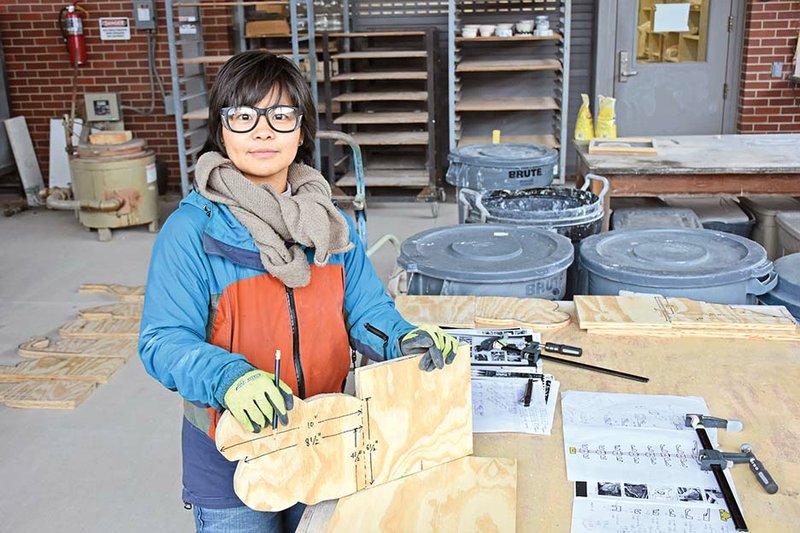
Q: Can you tell us a bit about your current artistic practice? Any new projects that you are working on?
Ishimura: “The current exhibited projects present an appreciation for natural circulation emerging in everyday life reflecting its ephemeral beauty. Shadow of Lives, (a past project consisted of) fusing hair between pieces of glass, burning (the) hair to ash presenting an individual’s pure existence along with their happy memories. In 2016, I began to collect a lock of hair from people that represents their personality, their DNA, and culture. I heat the hair sandwiched between two pieces of microscope slide glass to fuse the hair and trap the pattern of ash from the hair as the pure essence of life. The objects are absent of people’s appearance. The trapped ash and written memories are juxtaposed to present a beautiful history and entity without prejudice.
My art projects involve people through the perspective of the aesthetics to interact with each other in order to generate empathetic experience among me and the people in the United States.”
Q: I noticed that you’ve been to the park in the past; can you speak to that experience a little?
Ishimura: “I went to Franconia Park in the Fall of 2017 as an assistant to Leticia Bajuyo. I helped her with the metal public art (piece) out of fences. That was the first time I dealt with public (outside) art for me. I appreciated the park’s hospitality. The food was always awesome, and people care about healthy ingredients and are very welcome to vegetarian and vegan.”
Q: Now for all five of these artists!
Any advice for aspiring artists who identify as women out there?
“What you have to say is important. No one is going to fight for you to be an artist. You need to NEED it. You are never going to have enough money to make what you want to make, DO IT ANYWAYS. Try to learn as much as possible so you can do for yourself. You are so so valuable to this world, it’s our job as artists/activists/feminists to continue making and fighting because no one else is going to do it. Wear your safety glasses and hearing protection. Get mad. Make the damn thing.”
“One thing that I’ve recently realized, is that all of the people I’ve been working with, inside and outside of my close collaborations, are women. The grant foundations are headed by women, the cultural council, the principal of the school I work for, and the local arts center are all female, and are very supportive and encouraging. Their kindness and eagerness to help me makes it easier to do the community art that I see as important. My advice is not to be shy about meeting people and telling them your ideas, so many people care a lot about helping artists!”
“I’m trying to stray away from using the phrase ‘stand your ground,’ but for all of the aspiring artists identifying as women out there: you know yourself better than anyone. You know your work and your intentions better than anyone. Make the work that you want to make unabashedly.”
“I think this could apply to anyone but try to find the people who genuinely support you and support them in return. Those are your people.”
“I think feminism ended because women got equalized and rights or at least will end very soon. Women lose a reason to complain just because of being women. Also, feminist’s work will not be good just because you are a woman. Now, please seek your aesthetic and identity as yourself.”
Thank you so much for reading and a big thank you to all of these wonderful artists!
